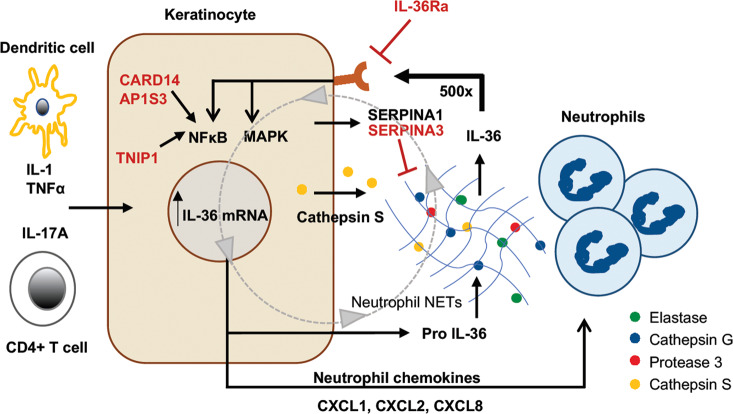Fig. 3.
IL-36 autocrine and autoinflammatory circuits. Keratinocytes are the major source of IL-36 in the skin. IL-36 expression can be induced by other pro-inflammatory cytokines, including IL-1, TNF, and IL-17A. IL-36 is secreted as full-length “pro-IL-36.” When exposed to neutrophil-derived proteases, including elastase, cathepsin G, or protease 3, IL-36 cytokines are enzymatically cleaved into a truncated form that has >500-fold greater biological activity. This truncated IL-36 can act back on keratinocytes via the IL-36 receptor (IL-36R) to induce even more IL-36 expression, amplifying the circuit, as well as expression of neutrophil chemokines such as CXCL1, CXCL2, CXCL6, and CXCL8 (IL-8) that attract progressively greater numbers of neutrophils into the skin. The serine protease inhibitors SERPINA1 and SERPINA3 can inhibit neutrophil proteases. Genes shown in red have been shown to genetically predispose to pustular forms of psoriasis

